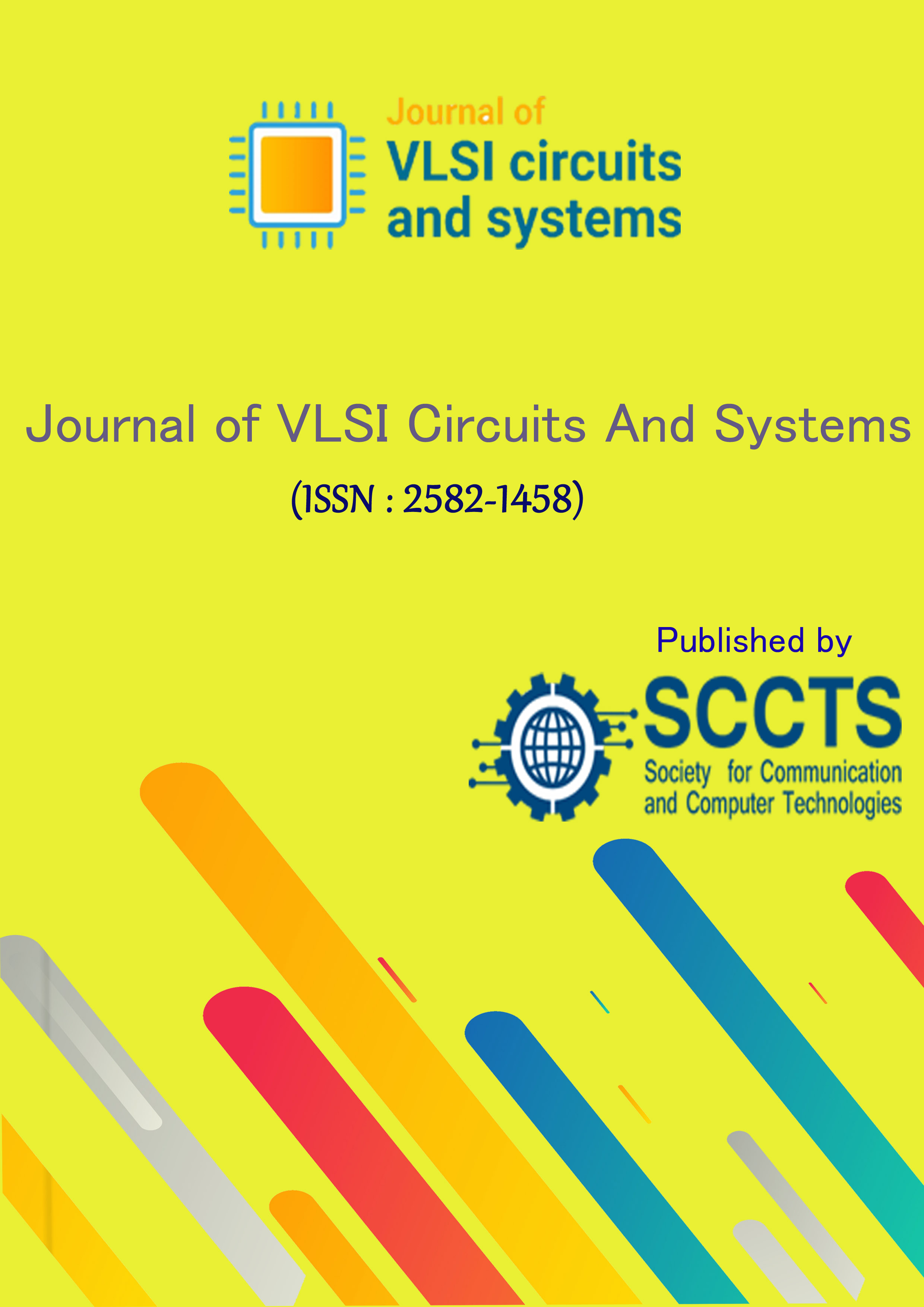About the Journal
The Journal of VLSI Circuits and Systems is a peer-reviewed journal committed to publishing high-impact research in the field of Very-Large-Scale Integration (VLSI) design and systems engineering. The journal provides a platform for disseminating cutting-edge innovations that span the full spectrum of theoretical advances, simulation models, architecture design, physical implementations, and system-level integration in VLSI technology. (ISSN - 2582-1458)
The journal invites original research papers, reviews, and application-driven studies that explore novel methodologies, tools, and trends across digital, analog, mixed-signal, and RF integrated circuits, as well as embedded and neuromorphic systems.
The journal covers a broad spectrum of topics related to VLSI circuits and systems, including but not limited to:
- VLSI Circuit Design
- Low-power, high-speed digital circuit design methodologies.
- Analog and mixed-signal integrated circuits (ADC/DACs, PLLs, oscillators).
- Emerging logic families: adiabatic, quantum-dot cellular automata (QCA), reversible logic.
- Radiation-hardened and fault-tolerant circuit design.
- Clocking strategies, synchronization circuits, and time-interleaved designs.
- Design Automation and EDA Tools
- Hardware Description Languages (HDL), High-Level Synthesis (HLS), and Register Transfer Level (RTL) design.
- Placement, routing, and layout optimization.
- Logic and physical synthesis for power, performance, and area (PPA).
- AI/ML-driven EDA and design space exploration.
- Formal verification, equivalence checking, and constraint-driven simulation.
- VLSI System Architectures
- System-on-Chip (SoC), Network-on-Chip (NoC), and Chiplet-based modular architectures.
- Hardware/software co-design and hardware accelerators for edge and cloud computing.
- Memory subsystems: SRAM, DRAM, eNVM, MRAM, ReRAM integration.
- Application-specific architectures for AI, DSP, cryptography, and bioinformatics.
- Emerging Trends and Technologies
- 3D ICs, Through-Silicon Vias (TSVs), and heterogeneous integration.
- Neuromorphic, brain-inspired, and spiking neural network hardware.
- Quantum VLSI circuits and cryo-CMOS design challenges.
- Photonic and plasmonic interconnects and optical VLSI.
- Approximate computing and in-memory computation (IMC).
- Hardware Security and Reliability
- Secure VLSI design, side-channel attack mitigation, and logic obfuscation.
- Hardware Trojans, counterfeit detection, and Physically Unclonable Functions (PUFs).
- Process variation analysis, aging-aware design, and reliability enhancement techniques.
- Design-for-testability (DFT), built-in self-test (BIST), and fault modeling.
- AI and Reconfigurable VLSI Systems
- FPGA/ASIC implementations of deep neural networks, transformers, and edge-AI.
- Real-time processing using dynamic partial reconfiguration.
- Hardware-aware neural architecture search (NAS) and pruning techniques.
- Custom tensor processors and systolic arrays for AI/ML inference and training.
- Applications and Benchmarking
- VLSI solutions for biomedical implants, autonomous vehicles, IoT, AR/VR, and robotics.
- Edge-computing accelerators with ultra-low power constraints.
- Energy-harvesting and battery-less VLSI systems.
- Benchmarking methodologies for performance, energy-efficiency, and silicon area.
The journal targets academic researchers, VLSI designers, industry professionals, and students, aiming to advance VLSI circuit and system design through high-quality research.
Frequency - 2 issue Per Year
ISSN - 2582-1458








